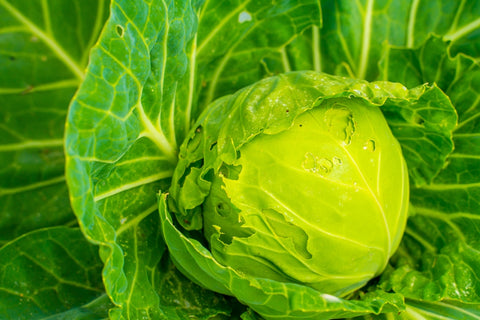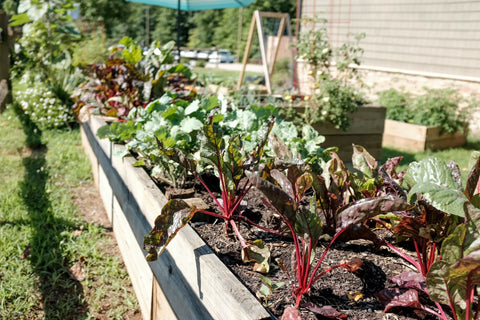As winter descends upon us, it brings a unique set of challenges for gardeners and one of the prominent foes is the unwelcome presence of mold and mildew. Controlling these fungal intruders in December requires a strategic approach to winter hygiene. In this blog, we will delve into the causes of mold and mildew during the winter months and explore effective preventive measures and solutions to ensure a healthy and thriving garden throughout the chilly season.

Understanding Winter Mold and Mildew:
The Cold Challenge:
Mold and mildew thrive in conditions of high moisture and warmth, making the winter months seem an unlikely time for their presence. However, the combination of dampness and cool temperatures can create an environment conducive to their growth. Winter mold and mildew often manifest in the form of powdery white or grayish substances on plant surfaces.
Common Culprits:
Different types of mold and mildew can affect plants during the winter, with powdery mildew and gray mold being particularly common. Powdery mildew often targets a variety of plants, forming a powdery substance on leaves, while gray mold tends to attack plants already weakened by winter conditions, causing a fuzzy gray coating on affected areas.
Preventive Measures: Winter Hygiene 101
Promote Air Circulation:
Adequate air circulation is crucial in preventing the buildup of moisture, which is a breeding ground for mold and mildew. Prune plants to eliminate overcrowded areas and allow air to flow freely. This is especially important for plants that may be sheltered by structures or other plants, creating pockets of stagnant air.
Choose Resistant Plant Varieties:
Opt for plant varieties that are naturally resistant to mold and mildew. Research and select plants known for their resilience to fungal infections, particularly those that may be prevalent during winter. Resistant varieties often prove to be less susceptible to the environmental conditions that foster mold and mildew growth.
Maintain Soil Drainage:
Improper soil drainage can lead to waterlogging, a condition that encourages the growth of mold and mildew. Make sure that your garden beds are equipped with proper drainage systems. Amending the soil with organic matter can also enhance drainage, preventing water from pooling around plant roots.
Regularly Remove Debris:
Fallen leaves, dead plant matter, and other debris can create pockets of moisture and provide a haven for mold and mildew spores. Regularly clear away debris from your garden beds and the base of plants. This simple practice helps disrupt the life cycle of fungi and reduces the risk of infestation.

Combatting Mold and Mildew: Strategies for Winter Survival
Neem Oil as a Natural Fungicide:
Neem oil is a natural fungicide known for its effectiveness against various fungal infections, including powdery mildew. Mix neem oil with water and apply it to plants that are affected. This organic solution helps control the spread of mold and mildew while promoting overall plant health.
Copper-Based Fungicides:
Copper-based fungicides are another effective weapon against mold and mildew. These fungicides disrupt fungal cell membranes, inhibiting their growth. Copper fungicides are available in various formulations, including sprays and powders. Apply according to the product's instructions for best results.
Baking Soda Solution:
Baking soda is a readily available household item that can be used to create a solution to combat powdery mildew. Mix baking soda with water and a small amount of liquid soap. Spray the solution on affected plants, coating the leaves thoroughly. This treatment alters the pH on the plant's surface, creating an inhospitable environment for the fungus.
Proper Watering Practices:
Overwatering contributes significantly to the development of mold and mildew. Be mindful of your watering practices during the winter months. Water your plants early in the day to allow excess moisture to evaporate before temperatures drop in the evening. Water at the base of plants rather than overhead to minimize moisture on foliage.
Special Attention for Specific Plants:
Rose Bushes:
Roses are susceptible to a type of gray mold known as Botrytis. To protect your rose bushes, prune away dead or infected branches and ensure good air circulation. Applying fungicides specifically formulated for roses can provide additional protection.
Vegetable Gardens:
Winter vegetable gardens may experience mold and mildew issues, especially on leafy greens. Implement preventive measures like proper spacing, good drainage, and applying fungicides labeled for use on edible crops. Regularly inspect your vegetable plants and remove any infected leaves promptly.

Winter Garden Hygiene Checklist:
Inspect Regularly:
Perform regular inspections of your garden, paying close attention to the undersides of leaves and areas where moisture may accumulate. Early detection allows for prompt intervention and prevents the spread of mold and mildew.
Practice Good Garden Sanitation:
Maintain a clean and tidy garden by removing debris, fallen leaves, and dead plant matter. This reduces the potential hiding spots and breeding grounds for fungal spores
Implement Preventive Sprays:
Incorporate preventive fungicidal sprays into your winter garden care routine. Applying these sprays before the onset of mold and mildew issues can act as a proactive measure to ward off potential infestations.
Conclusion: Winter Hygiene for a Flourishing Garden
As winter settles in, gardeners face the challenge of protecting their beloved plants from the insidious threats of mold and mildew. By adopting proactive winter hygiene practices and implementing targeted solutions, you can create a resilient defense against these fungal adversaries. From promoting air circulation to employing natural fungicides, the arsenal at your disposal is vast. By nurturing your garden through the winter with care and vigilance, you ensure that come spring, your outdoor haven will burst forth in a celebration of life, free from the clutches of winter mold and mildew.









